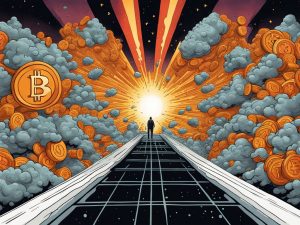Exploring the Launch of DOGE: A Bold Move by Donald Trump 🎉
Donald Trump’s recent unveiling of the Department of Government Efficiency (DOGE) signifies a strategic initiative aimed at streamlining federal operations and curtailing governmental expenditures. This new department is poised to play a crucial role in altering the relationship between the government and its fiscal responsibilities.
Key Highlights of DOGE 🌟
- Conceived to tackle public “waste and fraud” in government spending.
- Led in partnership with influential figures such as Elon Musk and Vivek Ramaswamy.
- While Musk’s past successes in enhancing efficiency at X are noteworthy, replicating such results within government bureaucracy presents distinct challenges.
Mission and Structure of DOGE 📋
The primary objective of DOGE is to optimize government agencies and rectify inefficiencies that contribute to financial waste. Its emphasis on reducing bureaucratic layers is expected to make government operations more efficient.
This newly established department aims to collaborate closely with the White House and the Office of Management and Budget. Its main focus is on advising policymakers on strategies to minimize costs and streamline operations.
Interestingly, the positioning of DOGE outside the traditional cabinet structure enables it to function as a consulting entity. This setup allows Trump and Ramaswamy to navigate potential allegations of conflict of interest, distancing their activities from typical government protocols.
Challenges Ahead 🏛️
Implementing effective reforms in government structures is fraught with complexities. While private sector strategies can often be quickly executed, the governmental apparatus’s nature tends to lag behind, making efficient implementation challenging.
Trump’s aspiration for DOGE is to create a consultative body that influences policy iterations without being directly accountable to Congressional oversight. This bold maneuver could lead to more streamlined communication and expedited decision-making processes within the government. However, it also raises questions about transparency and accountability in governance.
The Role of Memecoins in Contemporary Finance 💰
In a fascinating parallel, the concept of memecoins finds its relevance as DOGE reignites discussions about modern financial innovations. Dogecoin is emblematic of this trend, emerging as a digital currency shaped by community dynamics and internet phenomena.
Memecoins often reflect various themes, including celebrities, internet jokes, and even political figures – embodying cultural moments rather than traditional monetary principles. The volatility and ephemeral nature of these coins exemplify a unique aspect of digital finance.
Dogecoin, known for its community-driven support, has navigated market fluctuations effectively, showcasing resilience in the face of uncertainty. This adaptability resonates with the current economic landscape, where innovation frequently disrupts established norms.
Projected Outcomes 🚀
Trump indicated that DOGE aims to fulfill its mission by July 4, 2026, aligning its completion with the 250th anniversary of the Declaration of Independence. This timeline underscores the initiative’s commitment to rapid action, reminiscent of the urgent decision-making often seen in the realm of memecoins.
In contrast, federal bureaucracies traditionally operate in a slower, more methodical manner. The challenge will be in reconciling the urgency of DOGE’s objectives against the backdrop of entrenched government practices.
Hot Take on the Future of DOGE’s Impact 🔍
While DOGE represents an ambitious endeavor directed at government reform, its long-term influence remains to be seen. The integration of entrepreneurial spirit into traditional governance could pave the way for significant transformation or highlight the challenges of adaptability within a robust bureaucracy.
As the dynamics of political influence, economic shifts, and community engagement evolve, the dialogues initiated by DOGE will likely continue to resonate, opening up new avenues for reform. The intersection of government and innovative financial models marks a noteworthy period in shaping future policies and economic frameworks.





 By
By
 By
By


 By
By
 By
By